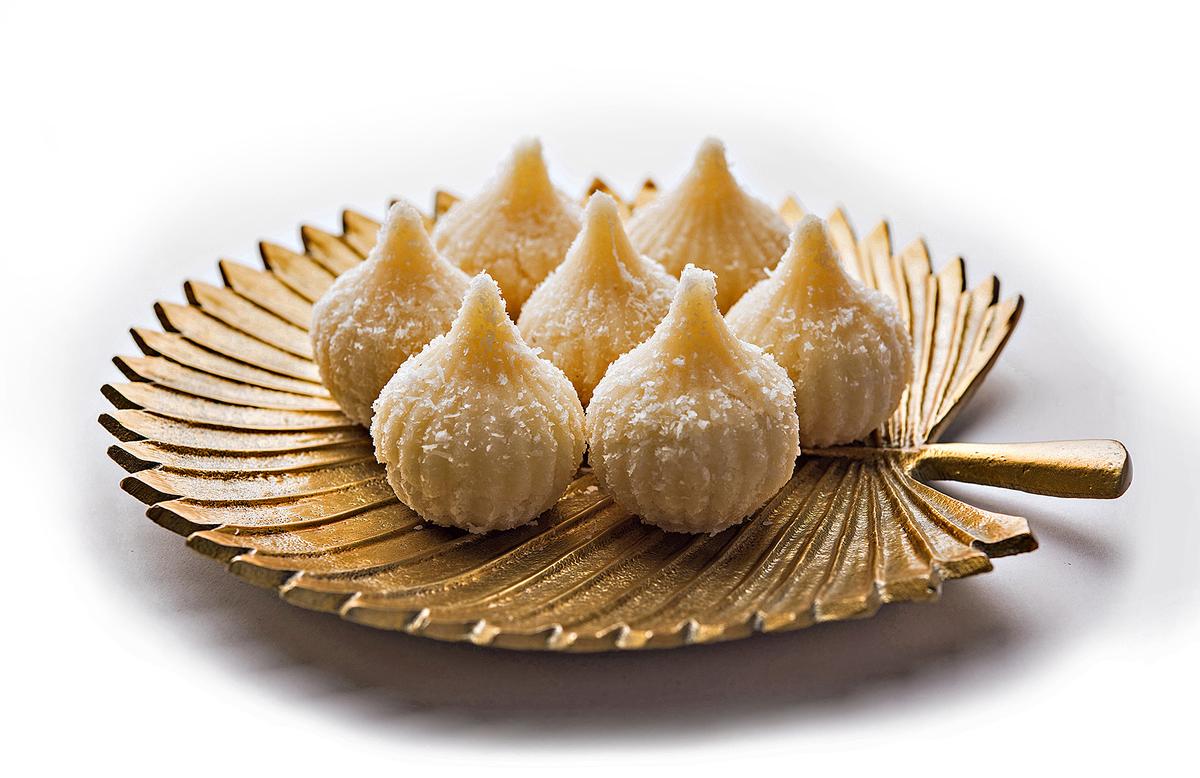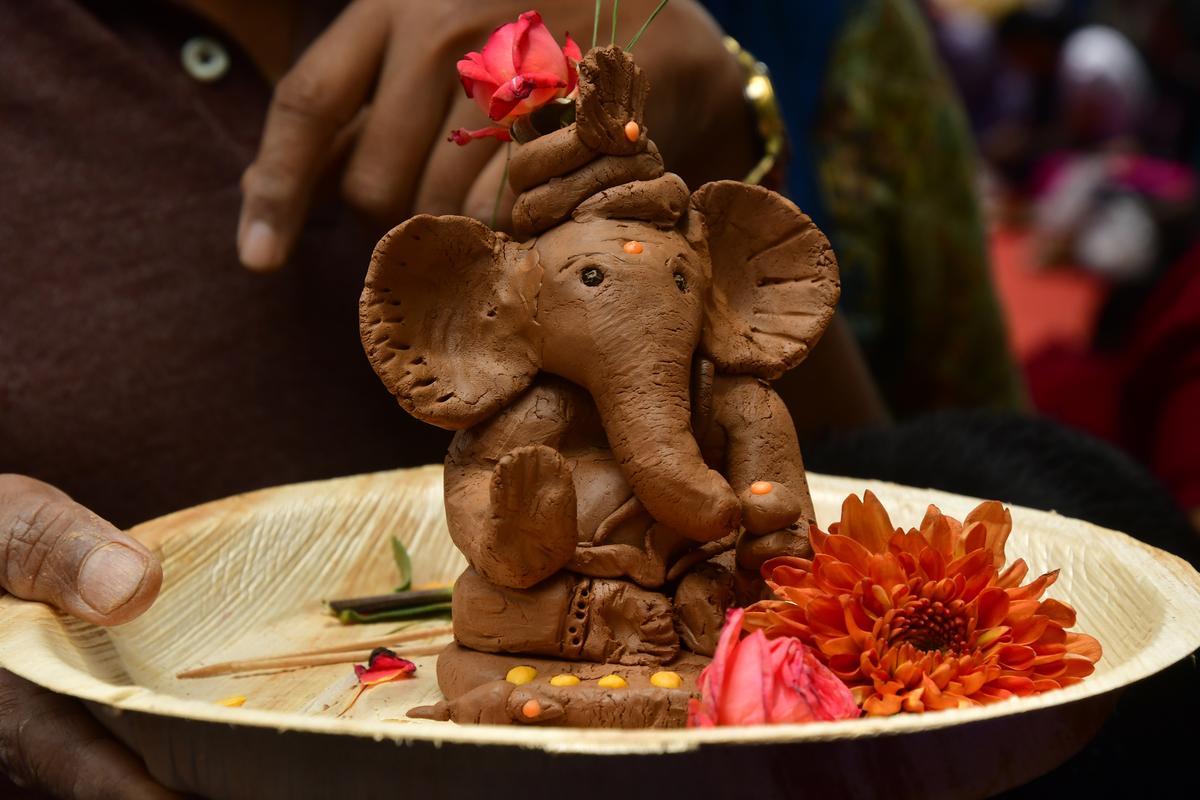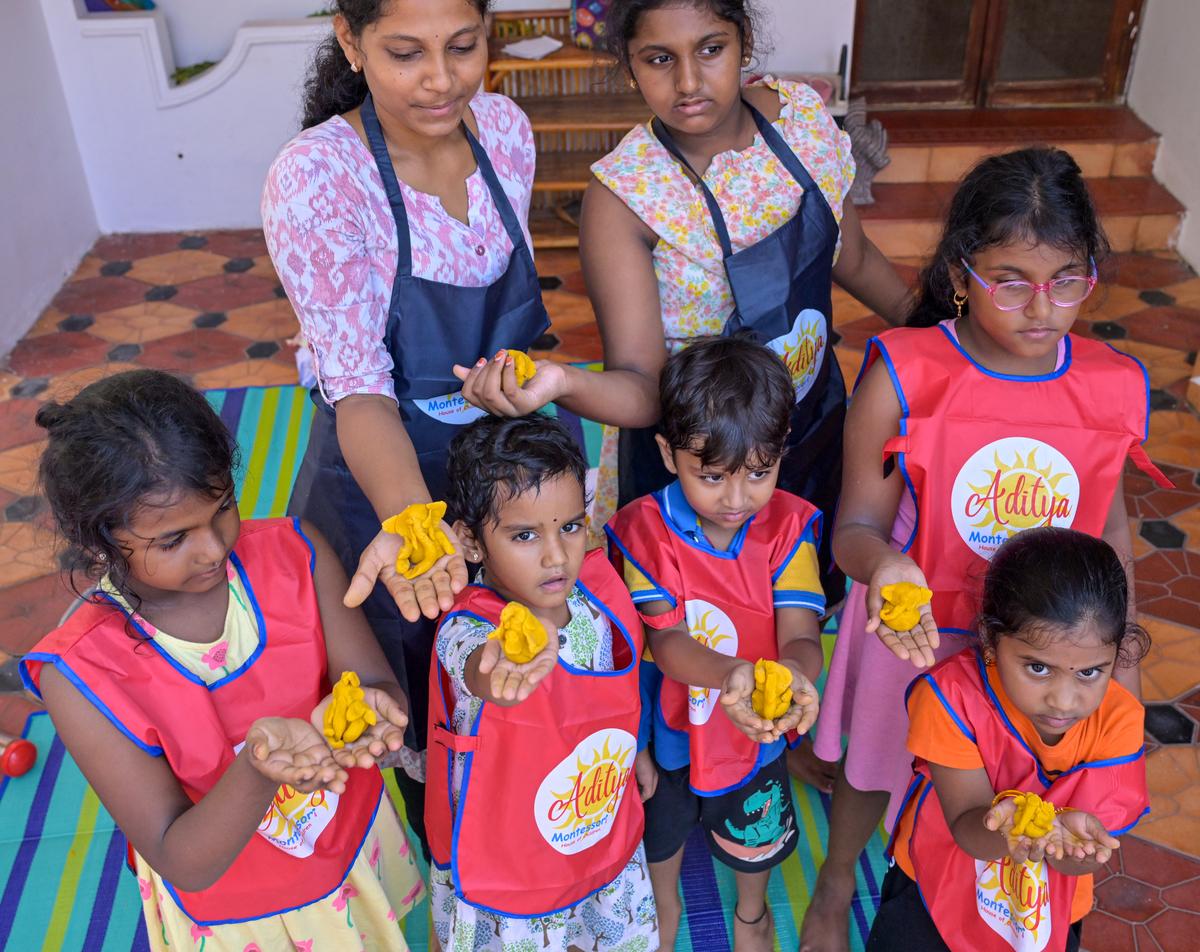Artist Moka Vijay Kumar giving finishing touches to the Ganesha idol made with millets at the artist’s home in Visakhapatnam.
| Photo Credit: SPECIAL ARRANGEMENT
As the city gears up to celebrate Ganesh Chaturthi, preparations are taking on a greener shift. Even amidst the plaster of Paris (POP) idols that are present across the market, there is a noticeable change in how people are approaching the festival. From sculpting their own clay idols at home to adorning their spaces with handmade, eco-friendly decor, the city’s residents are embracing an environmentally-conscious celebration.

Sweet Modak made using coconut
Manorama Pantula’s home at MVP Colony is preparing to welcome the festivities with Nature-themed decor and homemade traditional delicacies. For the past 25 years, Manorama has been making decor with locally-sourced flowers and leaves instead of relying on store-bought decorations made of plastic and synthetic materials. In tune with the Telugu traditions, she makes traditional delicacies like aviri kudumu and two varieties of undrallu or modak every year.
The preparations for prasadam begins at 4am on the day of the festival. “Aaviri Kudumu (steamed urad dal dumplings) is a traditional dish offered during the festival. I make it with chana dal, rice flour and seasonings. The dumplings are steamed such that they are soft and fluffy,” says Manorama. She also makes a special dish called panasa buttalu, a Vinayaka Chavithi special in this region, with a jackfruit leaves basket. “These are steamed in a dish made of jackfruit leaves that hold special significance. During the months of August and September when there is a seasonal change from summer to monsoon, stomach ailments are common. Jackfruit leaves are said to be a natural remedy for such issues,” says Manorama. These are served with coconut and tamarind chutney for a nutritious meal.
Perhaps the most significant shift this year is the growing number of people making their own Ganesha idols. Workshops have been held across the city, with participants of all ages eager to learn the craft.
Millet Ganesha
Visakhapatnam artist Moka Vijay Kumar has gained attention for his innovative approach. This year, he created a Ganesha idol using millets, which are not only sustainable but also symbolically rich. Speaking about his work, Vijay says, “The idol is a representation of the connection between spirituality and sustainability. Millets have fed us for centuries, and by using them in the idol, I wanted to showcase our cultural heritage and respect for Nature.” The 15×19 inch idol was made using kodo, foxtail, little, finger and black little millets.

Clay Ganesha idol
| Photo Credit:
MURALI KUMAR K
Jansi Tripuraneni made her own Ganesha idol at a workshop hosted by terracotta artist Kesava Reddy and organised by Local Hungama. “The clay was brought from Araku, which was a pleasant surprise. We moulded the clay with our hands, using tools to give it the form. I love how we were guided to include details like a shawl and crown for our little Ganesha idol,” says Jansi, who attended the workshop along with her five-year-old son.
Every year, Jansi picks up 21 varieties of leaves for decorating the puja setup and makes kudumulu, undrallu, payasam, puliohora and other traditional sweets. “We stopped buying plastic umbrellas and the traditional palavelli from the markets and instead reuse whatever we have at home,” she adds. At the end of the festivities, the idol is placed in a tub of water and later, the clay is used in her home garden while the flowers go for composting.

Children showing Ganesha idols made with gram flour and turmeric at a Montessori school in Visakhapatnam.
| Photo Credit:
KR Deepak
Ringing in the festivities by involving children, Nollu Alekhya, a teacher at a Montessori school in Visakhapatnam, is making use of besan or gram flour along with turmeric to make idols and also drive home the message of sustainability. “The idea is to make children understand the significance of using natural materials that easily dissolve after the festival.
The kids roll up their sleeves and dive into the process of mixing besan and water to form a dough-like consistency before shaping Ganesha’s body, head, trunk, and ears. Once the form is ready, they dust the idols with turmeric, giving them a golden colour. Beyond the fun aspect, the workshop emphasises the importance of eco-consciousness. “Each year, millions of POP idols are immersed in water bodies, causing severe pollution. When the idols are made of natural materials that dissolve easily in water, they leave no toxic residue behind. Making your own idols also brings a sense of ownership and responsibility. The kids know that they’ve made something with their own hands that won’t harm the environment when immersed,” adds Alekhya.
Published – September 05, 2024 03:49 pm IST









